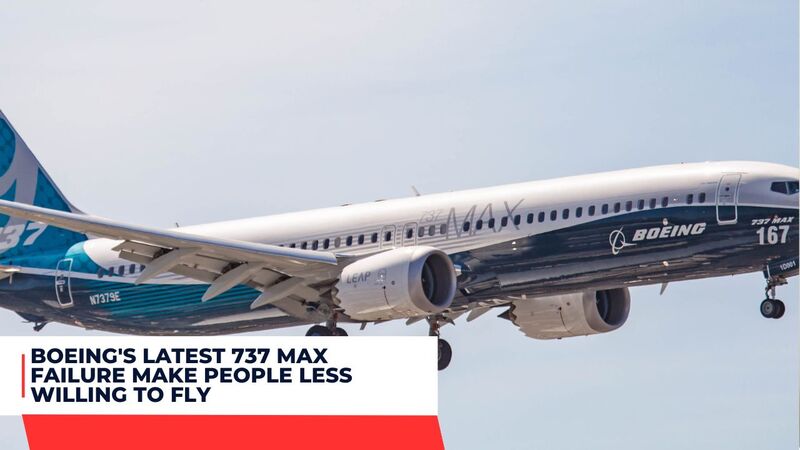After two deadly plane accidents prompted regulators to temporarily ground Boeing 737 Max planes worldwide in 2018 and 2019, Boeing took decisive action to recover. They succeeded, with regulators clearing their return to service.
Now, another Boeing issue has surfaced: on Friday evening flight from Portland to Ontario, part of the fuselage blew out during a flight.
Boeing’s 737 Max crash
Details surrounding Boeing’s 737 Max crash continue to surface and grow more disturbing. The company violated industry norms and basic ethical principles by using software to compensate for an otherwise safe plane.
As an example, Boeing did not disclose that they had included special software onboard the 737 MAX to prevent an engine stall caused by reconfiguring engines from earlier versions of Boeing jets. Furthermore, no simulation training sessions were mandated on this plane.
Boeing engineers were under immense pressure to produce the MAX quickly to remain competitive against Airbus. An ex-engineer filed an internal ethics complaint alleging management obstructed systems which would have exposed errors with MAX’s AOA sensors that caused MCAS in both Lion Air and Ethiopian Airlines crashes (Dickson 2019; Gelles et al. 2019). These two tragedies have prompted Boeing to revamp its corporate culture to prioritize engineering over production and finance (Gelles and Kitroeff 2020), though this process will likely take some time and public pressure before returning the MAX can return to flight.
The crash avoided tragedy
Boeing spokeswoman Anne Clark confirmed Saturday that delivery of their 737 Max aircraft had been temporarily suspended while more information is obtained regarding what caused its engine sensor to fail during Friday’s crash.
Sensors play an integral part of an aircraft’s automatic system designed to prevent stalls. Yet in both Ethiopian Airlines and Lion Air accidents, one faulty sensor set off an automated sequence that took the lives of all 346 on board.
Boeing has pointed to pilot error and inadequate training as factors behind two deadly crashes, but has also come under scrutiny over FAA’s certification process.
Families of victims recently filed a lawsuit in Texas against Boeing to force it to end what they consider its cover-up of MCAS problems and provide training on MCAS to its pilots. They specifically want answers as to whether Boeing knew its safety alert didn’t work and what sort of training its pilots received for MCAS use.
Before other aviation regulatory bodies around the world allow Boeing 737 Max jets back into flight, including China, which has yet to lift its ban. the FAA must approve of their fix.

Southwest have resumed flights
One year after the crashes, Boeing CEO Dennis Muilenburg faced questions from lawmakers regarding his company?s design and certification processes as well as any cozy relationship with regulators. Retired pilot Chesley Sullenberger testified against Boeing for trying to withhold information regarding MCAS flight stabilization system from regulators.
MCAS was designed to prevent an airplane from stalling by using input from two sensors to measure how close its nose is to vertical. Based on that data, MCAS sends signals to its horizontal stabilizer that force both tail and nose up (Gates 2018; Ahmed et al. 2019). But in both the Lion Air and Ethiopian Airlines crashes, one AOA sensor repeatedly activated MCAS (Travis 2019).
Boeing will have to work hard to restore trust between itself, airlines and passengers as it returns its 737 Max fleet into service. Some carriers like Southwest have resumed flights while others have yet to do so. Furthermore, Boeing must face down lawsuits filed by families of victims of crashes as part of this process.
It’s not over
The National Transportation Safety Board is investigating why Alaska Airlines Flight 261 experienced an explosion at 16,000 feet, but more importantly whether Boeing?s current issue will make people less inclined to fly on any of its planes in future.
Boeing will find it challenging to rebound from the two fatal 737 Max crashes that killed 346 people in Indonesia and Ethiopia, but can still make money through its other aircraft lines.
Boeing can produce and sell other planes, but rebuilding confidence in the 737 will take time and may never happen if the National Transportation Safety Board finds Boeing was indifferent to safety concerns. On one plane, management rejected multiple upgrades that required pilot training – reports from former colleagues confirm this claim while internal whistleblower memos reveal management wanted minimal modifications made in order to avoid upsetting airlines.
- Friday Intraday Trading Sees Nvidia’s stock Market Cap Momentarily Cross $2 Trillion
- Trump’s January 6 Civil Cases Proceed While Criminal Case Is Halted
- Trump Delivers Speech at the Columbia Black Conservative Federation Gala
- Trump Declares Strong Support for IVF Following Alabama Supreme Court Decision
- Schumer in Ukraine Declares US Backing During House Aid Standoff






